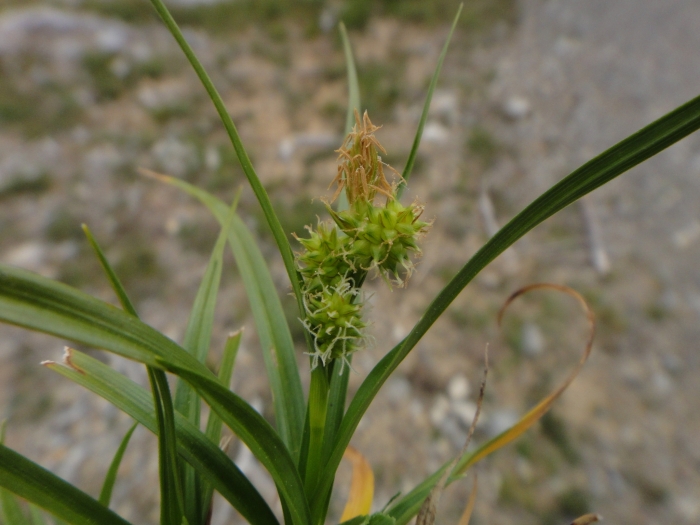Small-Fruited Prickly Sedge
(Carex oederi)
Small-Fruited Prickly Sedge (Carex oederi)
/
/

Christian Berg
CC BY 4.0
Image By:
Christian Berg
Recorded By:
Copyright:
CC BY 4.0
Copyright Notice:
Photo by: Christian Berg | License Type: CC BY 4.0 | License URL: http://creativecommons.org/licenses/by/4.0/ | Rights Holder: Christian Berg | Publisher: iNaturalist | Date Created: 2012-07-15T10:51:54-07:00 |
















Estimated Native Range
Summary
Carex oederi, commonly known as Small-fruited Prickly Sedge, Early Sedge, or Oeder’s Sedge, is a semi-deciduous perennial grass native to a variety of habitats in the temperate regions of the Northern Hemisphere, including moist meadows, riverbanks, and forest openings. It is particularly adapted to wetland margins and is often found on clay soils. This sedge typically grows at a moderate rate to a height and width of 1-2 feet (0.3-0.6 meters). Its appearance is characterized by tufted, grass-like foliage and green, inconspicuous flowers that bloom in the spring and summer, followed by small, prickly fruits that give the plant its common name.
Carex oederi is valued for its ability to thrive in wet conditions and is often used in rain gardens, as a ground cover in moist areas, and for erosion control along waterways. It is also suitable for naturalistic plantings and as a component of wildlife gardens, where it provides habitat for various insects and birds. This sedge prefers full sun to part shade and grows best in medium draining clay or loam soils, with consistent moisture. While generally low-maintenance, it can spread by rhizomes and may require management to keep it within bounds.CC BY-SA 4.0
Carex oederi is valued for its ability to thrive in wet conditions and is often used in rain gardens, as a ground cover in moist areas, and for erosion control along waterways. It is also suitable for naturalistic plantings and as a component of wildlife gardens, where it provides habitat for various insects and birds. This sedge prefers full sun to part shade and grows best in medium draining clay or loam soils, with consistent moisture. While generally low-maintenance, it can spread by rhizomes and may require management to keep it within bounds.CC BY-SA 4.0
Plant Description
- Plant Type: Grass
- Height: 1-2 feet
- Width: 1-2 feet
- Growth Rate: Moderate
- Flower Color: N/A
- Flowering Season: Spring, Summer
- Leaf Retention: Semi-deciduous
Growth Requirements
- Sun: Full Sun, Part Shade
- Water: Medium
- Drainage: Medium
Common Uses
Bank Stabilization, Border Plant, Erosion Control, Low Maintenance
Natural Habitat
Moist meadows, riverbanks, forest openings, and wetland margins
Other Names
Common Names: Early Sedge, Oeder’s Sedge
Scientific Names: , Carex oederi, Carex flava subsp. oederi, Carex flava subsp. oederi, Carex flava subsp. orthorrhyncha ?elak., Carex flava var. oederi, Carex oederi subsp. oederi, Onkerma oederi, Trasus oederi,
GBIF Accepted Name: